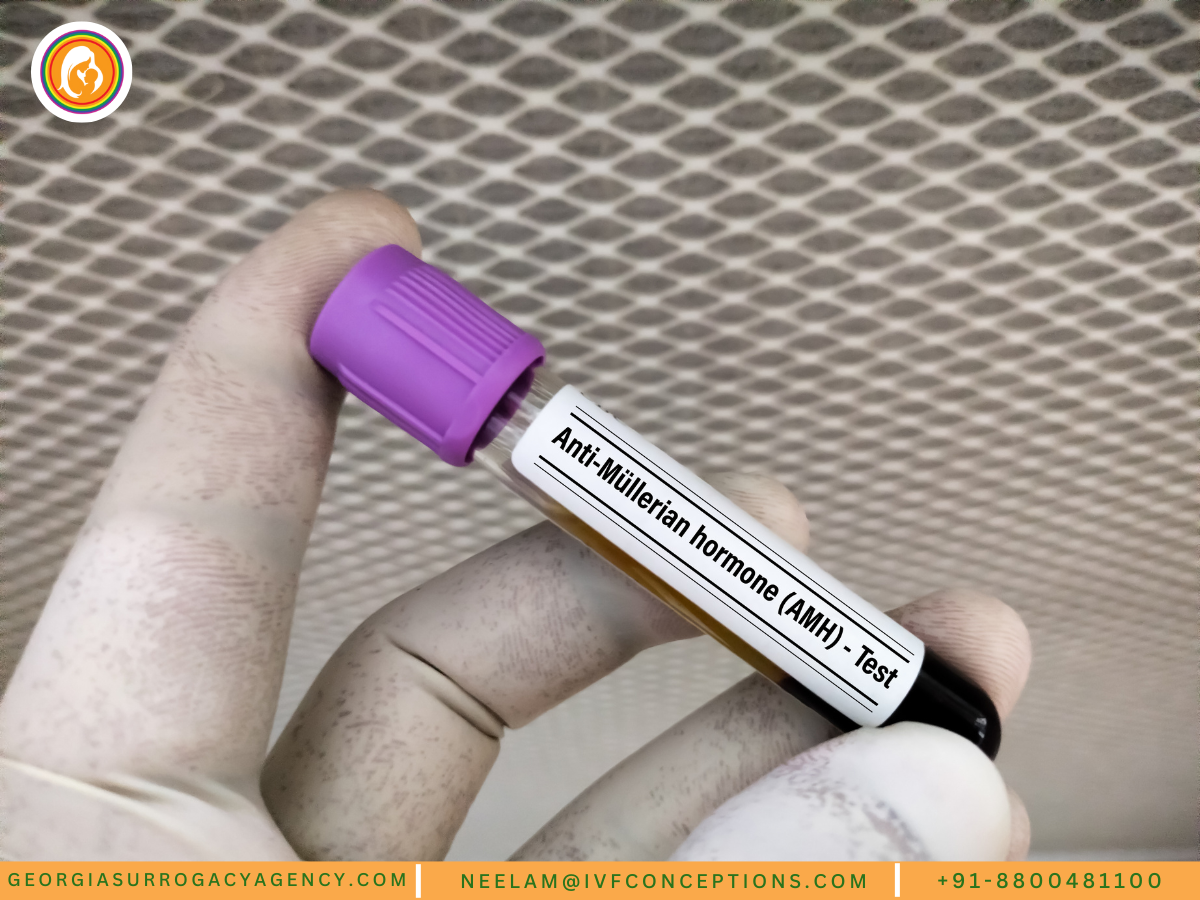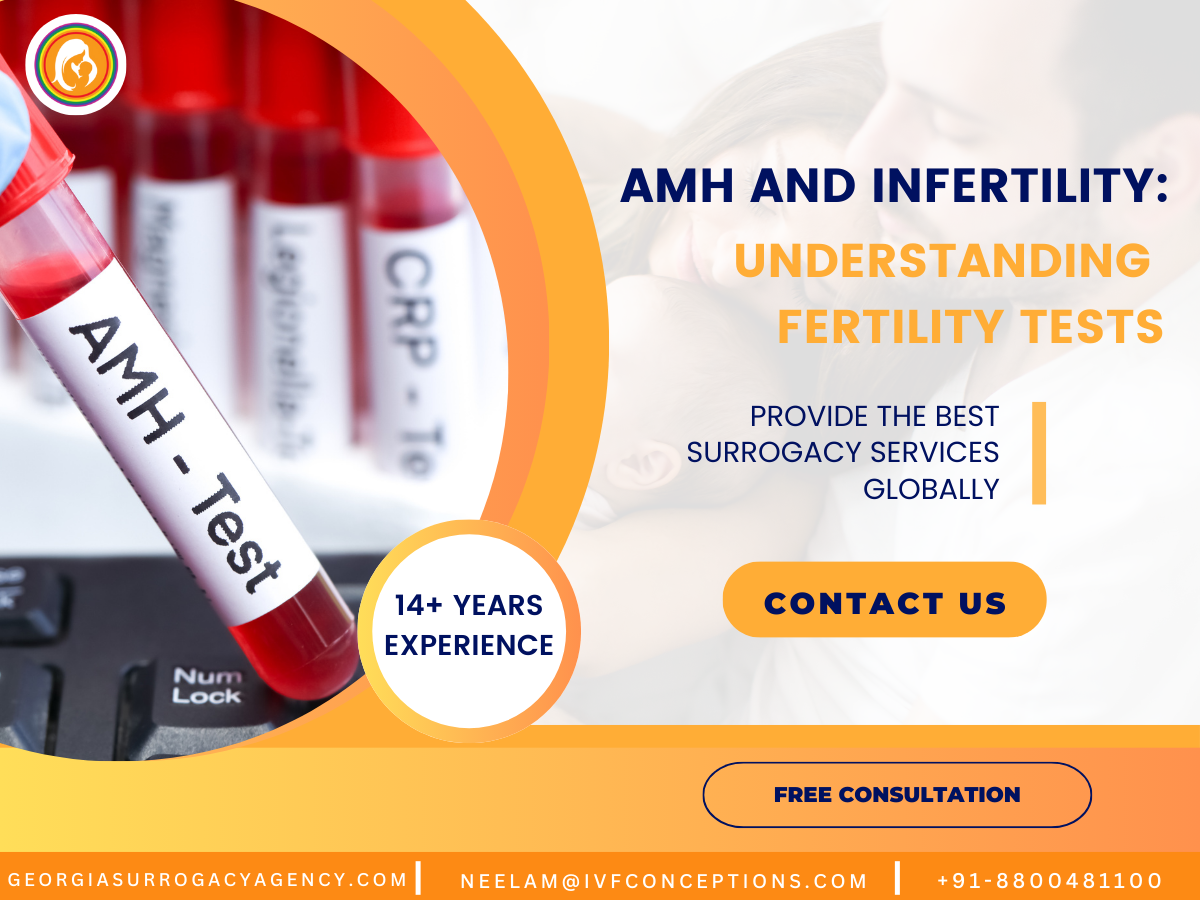AMH and Infertility: Understanding Fertility Tests
How much do you know about your fertility? The Anti-Müllerian Hormone (AMH) test can give you key insights into your reproductive health. But what is AMH, and how does it affect your ability to have a baby? Let’s dive into the role of AMH in infertility and why it’s vital to understand your fertility journey.
- Book an online appointment: Get a free online consultation.
- Call\W:+91-8800481100 Email:neelam@ivfconceptions.com
Key Takeaways
- AMH is a hormone made by the ovaries that shows how many eggs you have left and your fertility potential.
- High AMH levels mean better chances of success with fertility treatments like in vitro fertilization (IVF).
- Low AMH levels don’t always mean IVF won’t work for women under 35. They might mean you have fewer eggs.
- AMH tests help predict how well you’ll respond to fertility drugs and help decide on treatment.
- Understanding AMH results needs a professional’s help, as fertility is complex and involves many factors.
More Resources to Read:
Debunking 5 Common Myths Associated with IVF
IVF Terminology and IVF Acronym 101: A Guide
Difference Between IVF and Surrogacy: A Comprehensive Guide
IVF vs IUI: Comparing Fertility Treatment Options
What is Anti-Müllerian Hormone (AMH)?
Anti-Müllerian Hormone (AMH) comes from granulosa cells in ovarian follicles. It starts in primary follicles and peaks in preantral and small antral stages. AMH production drops as follicles grow and stops when they reach the next stage.
AMH is only made in small ovarian follicles. So, blood tests measure the size of the growing follicles. This shows how many eggs a woman has left, or her “ovarian reserve”.

AMH and Its Role in Reproductive Health
AMH is key in reproductive health studies. It’s a marker for certain gonadal tumors. It helps show how fertile a woman is in assisted reproduction.
AMH levels are linked to conditions like PCOS and endometriosis. They also show when girls are getting ready to start menstruating.
In IVF cycles, AMH levels in follicular fluids match blood levels. This could help track follicle health. AMH slows down the growth of new follicles, affecting their development and selection.
AMH is seen as a good marker for ovarian follicle health. It helps understand ovarian function and fertility potential.
AMH and Infertility
How AMH Levels Relate to Ovarian Reserve
As women get older, they have fewer follicles, which means less anti-Müllerian hormone (AMH). Women with many small follicles, like those with polycystic ovaries, have high AMH levels. On the other hand, women close to menopause or with a low ovarian reserve have low AMH levels.
AMH testing is key in understanding fertility and infertility. Low AMH levels mean a woman might struggle to conceive naturally. Studies show AMH is a good indicator of how well fertility treatments will work and the chances of having a baby.
| Condition | AMH Levels |
| Polycystic Ovary Syndrome (PCOS) | High |
| Diminished Ovarian Reserve | Low |
| Nearing Menopause | Low |
A single AMH test doesn’t always tell when a woman will get pregnant, especially if she’s not trying to get pregnant. AMH levels can change over time, making it hard to understand them. We need more studies to see how useful AMH is in predicting when menopause will come or fertility after chemotherapy.
AMH Testing and Fertility Treatment
Anti-Müllerian Hormone (AMH) testing is key in predicting how well fertility treatments work. This includes in vitro fertilization (IVF) and other assisted reproductive technology (ART) methods. AMH shows how many eggs a woman has left, which affects her chances of getting pregnant.
Women with high AMH values often respond better to fertility treatments. This means they might get more eggs during IVF. Having more eggs increases the chance of a healthy embryo for transfer, making pregnancy more likely. Studies show high AMH levels lead to fewer IVF cancellations, more live births, and extra embryos for later use.
On the other hand, women with low AMH levels might need special treatment plans. Even if AMH is low, it doesn’t mean IVF won’t work for women under 35. AMH tests help doctors figure out the right amount of medication for better results.
In short, AMH testing is crucial in reproductive endocrinology and fertility treatment. It helps doctors create the best treatment plans based on a woman’s egg quality assessment and female age and fertility. Knowing a woman’s AMH levels can greatly improve her chances of getting pregnant with IVF or other assisted reproductive technology (ART) methods.
“AMH testing can help fertility specialists determine the appropriate dosage of fertility medications to optimize ovarian response during IVF treatment.”
| AMH Level | Interpretation |
| Over 1.0 ng/ml | Normal AMH levels |
| 0.7 – 0.9 ng/ml | Low Normal AMH levels |
| 0.3 – 0.6 ng/ml | Low AMH levels |
| Less than 0.3 ng/ml | Very Low AMH levels |
Interpreting AMH Test Results
Looking at the results of an anti-Müllerian hormone (AMH) test can be tricky. Experts don’t agree on what “normal” levels are. But, some guidelines can give clues about your ovarian reserve and fertility.
AMH levels over 4.0 ng/mL are usually high. This is often seen in people with polycystic ovary syndrome (PCOS). Levels between 1.5-4.0 ng/mL are usually okay. Low normal levels are between 1.0-1.5 ng/mL. Low levels are 0.5-1.0 ng/mL, and very low levels are less than 0.5 ng/mL.
AMH is a continuum, meaning small changes in levels might not greatly affect your fertility potential. Doctors often use AMH along with other tests to understand your ovarian reserve better. This helps them decide on the best treatment.
| AMH Level | Interpretation |
| Over 4.0 ng/mL | High (often seen in PCOS) |
| 1.5-4.0 ng/mL | Normal |
| 1.0-1.5 ng/mL | Low normal |
| 0.5-1.0 ng/mL | Low |
| Less than 0.5 ng/mL | Very low |
Remember, interpreting AMH test results needs a full check-up by a fertility expert. They can give you specific advice based on your situation and fertility health.
More Resources to Read:
IVF Egg Donation in Georgia Country: A Guide
Surrogacy vs IVF: Understanding the Key Differences
IVF Treatment in Georgia: What You Need to Know?
Female Infertility Causes Symptoms And Treatments
Conclusion
Anti-Müllerian hormone (AMH) testing is now a key tool in checking reproductive health and helping with fertility treatment choices. It measures the hormone levels from ovarian follicles. This gives doctors a look into a woman’s ovarian reserve and how she might react to fertility drugs.
AMH isn’t a sure way to predict fertility, but it’s a big part of the puzzle. When combined with other tests, it helps spot potential infertility issues. This helps create treatment plans that fit each person’s needs.
Research on AMH and infertility is ongoing. This means our understanding and use of this biomarker in reproductive medicine will keep getting better. It can help those facing fertility challenges, whether through ART, IVF, or other treatments.
AMH testing also sheds light on conditions like PCOS and how freezing eggs affects ovarian reserve. As experts keep improving how we use AMH testing, it will become even more important. It will help people and couples make better choices about their reproductive health and fertility treatments.
If you’d like to learn more about IVF, Egg Donation, or surrogacy services globally, check out the rest of our website at Georgia Surrogacy Agency. We offer legally secure and affordable surrogacy consulting services for FREE.
Get in touch for FREE SURROGACY CONSULTING:
Mobile: +91-8800481100 ( WhatsApp, Line, Viber)
Email: neelam@ivfconceptions.com

FAQs for AMH and fertility in women
What is Anti-Müllerian Hormone (AMH)?
Anti-Müllerian Hormone (AMH) comes from granulosa cells in ovarian follicles. It starts in primary follicles and peaks in preantral and small antral stages. As follicles grow, AMH production drops and stops. AMH levels in blood show how many eggs you have left.
How do AMH levels relate to ovarian reserve?
As women get older, they have fewer remaining follicles. This means lower AMH levels and fewer antral follicles seen on ultrasound. Women with many small follicles have high AMH, while those with few have low levels. This is why AMH tests help check fertility and infertility.
How does AMH testing help with fertility treatment?
High AMH means a better response to IVF and more eggs retrieved. More eggs increase the chance of a successful IVF outcome. Low AMH doesn’t always mean poor IVF success in women under 35. AMH tests help doctors choose the right fertility meds for IVF.
How are AMH test results interpreted?
AMH test results can be tricky to understand. High levels (over 4.0 ng/mL) are often seen in PCOS. Normal levels are 1.5-4.0 ng/mL, low normal is 1.0-1.5 ng/mL, low is 0.5-1.0 ng/mL, and very low is less than 0.5 ng/mL. But remember, AMH levels are a continuous measure, and small changes may not greatly affect fertility.

Highly esteemed, authoritative, and trusted professional with a 14-year of experience in international surrogacy. Advocate for Secure, Legal, and Affordable International Surrogacy.
Neelam Chhagani, MA (Counselling Psychology) and Holistic Infertility and Third-Party Reproduction Consultant.
Member of European Fertility Society, Best Surrogacy Blogger of 2020, with 300 dedicated blogs, and top contributor on Quora for Surrogacy.


Add Your Comment